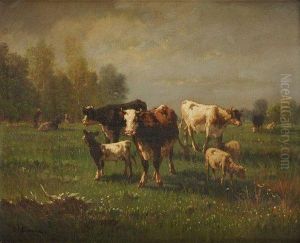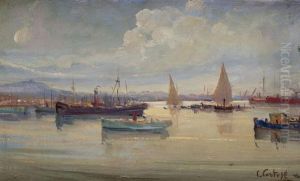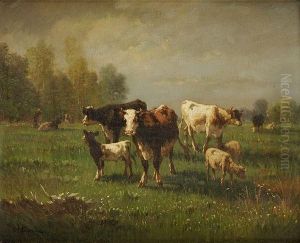Cortese Paintings
Giovanni Benedetto Castiglione, known as Il Grechetto or Il Benedetto Cortese, was an Italian Baroque artist, painter, printmaker, and draftsman. Born in Genoa in 1609, Castiglione is often confused with another artist, Giuseppe Maria Crespi, who was nicknamed 'Lo Spagnuolo' and sometimes called 'Cortese'. However, it is Castiglione who was particularly renowned for his innovative printmaking techniques and his evocative and pastoral subject matter.
Castiglione was a pioneer in the monotype process, a type of printmaking made by drawing on a non-absorbent surface, which is then pressed onto paper to produce a single print. His work in this medium was characterized by a free and expressive line quality that anticipated the Rococo style of the next century. His paintings often included themes of pastoral scenes, oriental figures, and religious subjects, with a particular fondness for the depiction of animals, which he rendered with remarkable dexterity and life-like vitality.
Apart from his prints, Castiglione's drawings and oil paintings were also highly esteemed during his lifetime and after. He worked in a variety of places, including Genoa, Rome, and Mantua, where he produced works for significant patrons. Despite his success, his life was marked by an irascible character, which led to various disputes with patrons and other artists. After a turbulent career, Castiglione died in Mantua in 1665. His work had a lasting influence on later artists, and his prints remain a subject of art historical interest for their technique and style.


